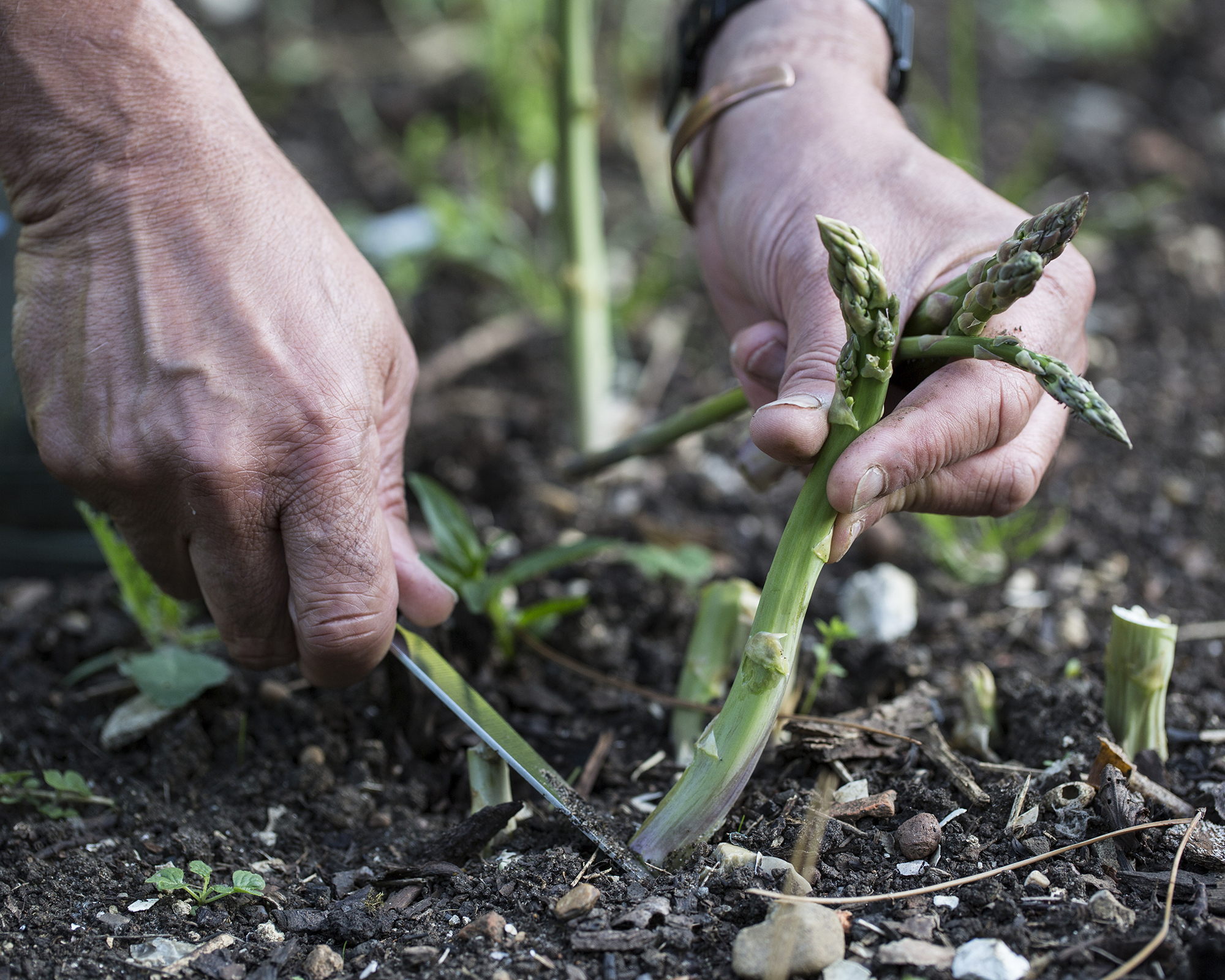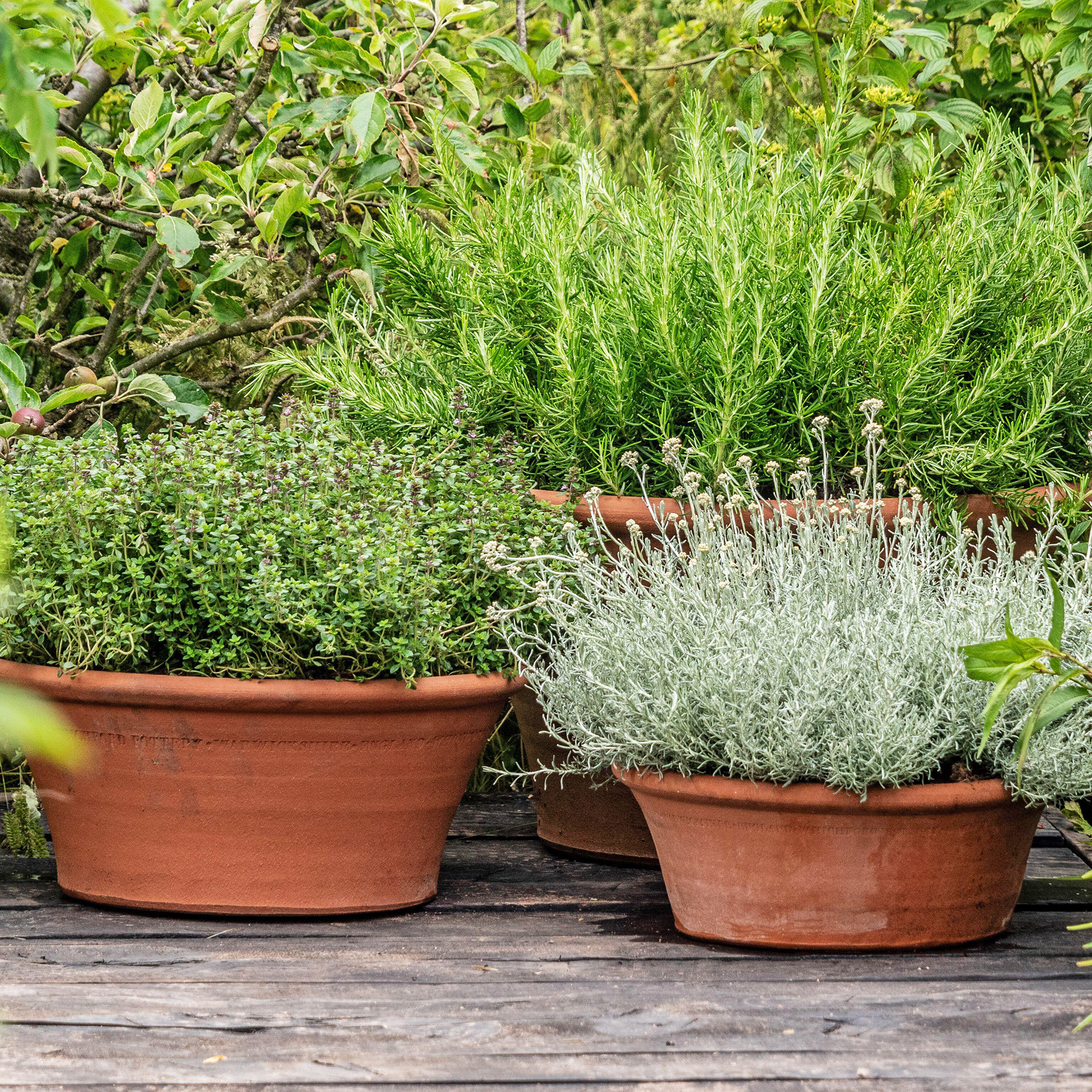Best Perennial Vegetables: Grow Crops That Come Back Every Year
Save money and expand your veggie repertoire with delicious perennial vegetables that yield fresh harvests year after year.


Melanie Griffiths
Starting a vegetable garden is one of the most fulfilling things you can do. Yet, nurturing home-grown crops is even more enjoyable when plants don't just die off at the end of the season, and return bigger and stronger the following year.
Planting perennial vegetables in the garden is a smart way to expand your growing potential without having to invest in new crops every year. If you only have a small space to work with, then growing perennial vegetables in pots is also a possibility.
Most of us usually only grow annual veggies, such as tomatoes and potatoes, which die at the end of the season and must be replanted the succeeding year. However, perennial vegetables return year after year, often yielding a bigger crop each time.
Many perennial species are also unusual vegetables that you will not find at the grocery store, making growing them more interesting and diverse.
What are Perennial Vegetables?
Like all perennial plants, perennial veggies are those that live for more than two years. The word "perennial" distinguishes them from the short-lived annuals and biennials. There are fewer true perennial vegetables than annuals, but there are still plenty to choose from.
Perennial crops extend the growing season by providing food both earlier and later in the year. Since they return each season, they give you more bang for your buck than annuals. They also often require less care than annuals.
What Vegetables Are Perennials?
There are a few readily known perennial vegetable plants, but there are a number of fascinating less recognized perennials that make a great addition to the garden landscape too. Each perennial has a unique habit and planting requirement.
Gardening tips, videos, info and more delivered right to your inbox!
Sign up for the Gardening Know How newsletter today and receive a free copy of our e-book "How to Grow Delicious Tomatoes".
As a general rule, once the plant is established, it is fairly maintenance-free.
Here, we round up the best crops to grow in your garden.
Rhubarb

Rhubarb is notable for its colorful red stalks topped with huge leaves that thrive in cool spring weather. Plant rhubarb in full sun and side dress with well-rotted manure to fertilize in the summer and fall.
Plant the crown in the early spring, with the central bud 2 inches (5cm) below the soil and crowns 6 feet (2m) apart. Don't harvest the first year of growth. Thereafter, the plant will thrive for six to eight years, at which point the plant should be divided in the spring or fall.
Asparagus

Like rhubarb, asparagus shouldn't be harvested in its first year of growth. It is another perennial that thrives in the cooler spring temps. Mature plants may yield for 10 to 15 years.
Amend the soil prior to planting with a 2-inch (5cm) thick layer of compost in a trench that is 6 inches (15cm) deep. Plant crowns in the spring, 6 to 8 inches (15-20.5cm) deep and 14 inches (35.5cm) apart. Cover the crowns loosely with 3 inches (7.5cm) of compost-rich soil. Finish filling the trench in the fall.
Artichoke

Another popular perennial vegetable is the globe artichoke. Not only are they delicious but the plant is quite spectacular. Artichokes are a member of the thistle family, which is obvious if you ever leave the edible flower bud on the plant; they open up into fuzzy vibrant purple flowers much like a thistle.
Plant artichokes in full sun in moist, well-draining soil that is amended with 2 inches (5cm) of compost. This perennial can be grown either from root divisions or seed. Plant 24 to 36 inches (61-91.5cm) apart in rows that are spaced 36 inches (91.5 cm) apart. Amend the soil around the plants in the spring with 1 to 2 inches (2.5-5cm) of compost.
Cut the artichoke back in the fall and cover it with a 6-inch (15cm) layer of straw.
Sunchokes

Sunchokes, or Jerusalem artichokes, are not the same as the above. Grown for its small, sweet tubers, the plant is actually related to the sunflower, and like the sunflower, is notable for its height of 6 to 12 feet (2-4m). They will spread rampantly and should be contained and thinned often.
Hill the plants like potatoes to increase production and harvest after the first frost. Plant the tubers directly in the ground in the spring.
Welsh Onions

Welsh onions are more commonly grown as an annual, but they can be grown as a perennial too. They produce mild onion-flavored greens that can be harvested throughout the year.
Plants are very easy to grow, requiring just occasional watering and a full sun location – though they will tolerate part shade.
Start Welsh onions from seed, and they will grow into a clump that can be divided in the spring.
French Sorrel

French sorrel is a lemony, acidic green that is easy to grow from seed and can be eaten either fresh or cooked.
Good King Henry is a European native that can be planted in either sun or partial shade.
Young shoots can be cut in the spring and cooked like asparagus while the leaves can be harvested and cooked like greens through the late summer. The plant is cold hardy and low maintenance.
Walking Stick Cabbage

“Walking stick” cabbage or kale – also known as the Jersey cabbage – is one of the most unusual vegetables you can grow.
This plant can get very large – shooting stalks up 10 feet (3m) in one season – and looks like a thin palm tree. Its leaves can be harvested from early to mid-fall and will keep you going all season. They should be cooked prior to eating.
Walking stick cabbage is a short-lived perennial in USDA zones 7 or above, lasting for two or three years. In cooler regions, it is grown as an annual.
Plants prefer well-fertilized soil and need watering weekly.
Bamboo Shoots

Bamboo shoots are edible in most varieties and provide a nice crunch in stir-fries. Running bamboo is an invasive plant, but can be confined to a large metal planter and be kept to a manageable size by regularly harvesting it for its crunchy shoots. Alternatively, opt for clumping bamboo, which has a short root structure and is slow to spread.
Bamboo shoots need to be peeled before use in cooking, as the culm has a thick exterior that is difficult to chew.
Nettle Plants

Nettles are actually common weeds (like dandelions) that are high in vitamins A and C, iron, calcium, magnesium, and more. The young shoots are mild in flavor and can be used cooked in any recipe calling for greens.
They are surprisingly delicious in soups and make a beneficial tea. However, nettles are also good plants to deter deer, so can be included in the garden for a dual purpose.
Wear gloves to harvest them to avoid getting stung. The sting disappears when the leaves are cooked.
Skirret

A cousin of the carrot, skirret is a low-maintenance crop grown for its roots, which have a lovely, sweet flavor. It is cold-hardy, pest-resistant, and thrives in moist, shaded areas. Its pretty flowers attract pollinators.
Skirret can be grown from seed, or divided from existing clumps. Once the roots are harvested, they can be eaten like a carrot, and are commonly boiled, stewed, or roasted to bring out their sweetness.
Ramps

Ramps are delicious members of the onion family that taste like a combination of onion and garlic. Often found growing wild on the forest floor, they are easy to grow, and the bulbs can be divided every year in the spring to be eaten or replanted.
Ramps naturally grow in shaded areas with rich, moist, well-draining soil. They can be grown from seed or via transplants. Add organic matter into the hole before planting and keep the plants moist.
Water Celery

Water celery (Oenanthe javanica) is an edible ground cover that can be grown in the sun or shade. It does like moisture and will form dense colonies.
All parts of the plant can be eaten. The raw leaves taste somewhat like celery and parsley combined.
Water celery is both frost and heat-tolerant and easy to grow from transplants or seed.
Ostrich Fern Fiddleheads

Ostrich fern fiddleheads are harvested for the tender, young shoots in the early spring. The plant thrives in shaded areas with moist soil and may spread.
The delicious fiddleheads should be harvested when they are tightly coiled and just a few inches (7.5cm) tall then cooked for at least ten minutes to bring out their unique, crisp, and nutty flavor.

Amy Grant has been gardening for 30 years and writing for 15. A professional chef and caterer, Amy's area of expertise is culinary gardening.
- Melanie GriffithsSenior Editor
-
 Get Ready For A Summer Of Hummers! Grow These Full Sun Hummingbird Plants and Flowers
Get Ready For A Summer Of Hummers! Grow These Full Sun Hummingbird Plants and FlowersIf you’re lucky enough to enjoy a sunny backyard, make sure you are maxing out on your pollinator opportunities and grow these full sun hummingbird plants and flowers
By Tonya Barnett
-
 12 Lush Alternatives To A Lawn For Sustainable Spaces
12 Lush Alternatives To A Lawn For Sustainable SpacesAlternatives to a lawn are beautiful and also beneficial to your local ecosystem and its pollinators. Explore our top picks for plants to replace grass.
By Tonya Barnett
-
 7 Perennial Herbs Perfect For Pots – Enjoy Aromatic Patio Harvests Year After Year
7 Perennial Herbs Perfect For Pots – Enjoy Aromatic Patio Harvests Year After YearDiscover the best perennial herbs to grow in pots. Ideal for small spaces, these low-maintenance plants offer year-round flavor and greenery on your patio.
By Bonnie L. Grant
-
 When To Plant Lavender For Happier And Healthier Plants Guaranteed!
When To Plant Lavender For Happier And Healthier Plants Guaranteed!You may be surprised to learn that the best times to plant lavender seeds are the cooler months. Knowing when to plant lavender correctly gives these fragrant herbs the best start, as this guide explains
By Tonya Barnett